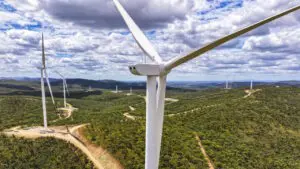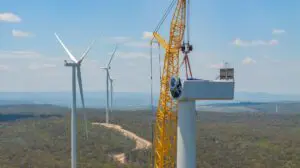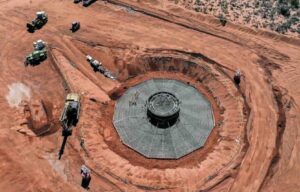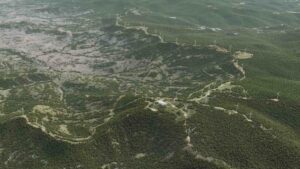A pair of geographically diverse court decisions handed down in December have ordered two wind farms be dismantled, highlighting the importance for renewable energy developers of securing all necessary approvals, including environmental and social.
The first court decision, handed down by the Court of Appeal in Nimes, France, has ordered the dismantling of a seven-turbine wind farm in Hérault which was built by Énergie Renouvelable du Languedoc (ERL), a subsidiary of German group New.
The company now has 15 months to dismantle the Bernargues wind farm and restore the site to its original state.
Development and construction of the Bernargues wind farm was controversial from the outset, having continued construction despite having its construction permit annulled twice – first in 2006 and then in 2017. Both permit cancellations were due to lack of sufficient information provided during the permitting process, specifically regarding the project’s impact study.
The court’s decision to finally put an end to the wind farm comes after numerous environmental complaints focusing on the turbines’ negative impact on local bird life – specifically, the golden eagle, with one death already recorded of the rare bird.
ERL will face a penalty of €3,000 per day for every day the project remains beyond the 15-month deadline. And while further appeals are possible, having already traversed the French judiciary, ERL will likely find itself without recourse but to dismantle the project.
Across the North Atlantic to the United States, in the state of Oklahoma, a judge in the Tulsa federal court ruled in mid-December that Enel North America, a subsidiary of Italian energy giant Enel, must now dismantle the 150MW Osage Wind Farm.
Following yet another lengthy legal battle, the Tulsa judge ruled in favour of the Osage Nation, citing that the turbines constituted a “continued trespass”.
While there is considerable background and context surrounding the case – including religious beliefs – which fall well beyond the scope of this article, the ruling focuses on the fact that the “developers failed to acquire a mining lease during or after construction, as well as after issuance of the Tenth Circuit Court of Appeals’ decision holding that a mining lease was required.”
Specifically, given that Enel and local developer Osage Wind Farms mined and crushed rocks during construction, this put the developers in violation of the Osage Allotment Act of 1906 which grants the mineral rights including oil, natural gas, and rocks, to the Osage Nation.
US Court of International Trade Judge Jennifer Choe-Groves further concluded that the developers “past and continued refusal to obtain a lease constitute interference with the sovereignty of the Osage Nation and is sufficient to constitute irreparable injury.”
A future trial will be held to assess monetary damages.
According to the Osage Minerals Council, Enel obtained leases from surface owners to construct the wind farm but failed to obtain the necessary lease and approval with the legal mineral rightsholders.
“The Council fights every day to provide for our headright holders,” said Everett Waller, chairman of the Osage Minerals Council.
“We will defend the Mineral Estate against anyone that does not comply with the law and tries to take our lands and resources.
“We are open for business and we look forward to working with anyone who negotiates with us in good faith.”
Both cases highlight the non-negotiability of obtaining all relevant licenses and working in partnership with local and native peoples and authorities. Both ERL and Enel are now on the hook for millions in dismantling costs that could have been avoided if proper consultation during the development and permitting stages.










